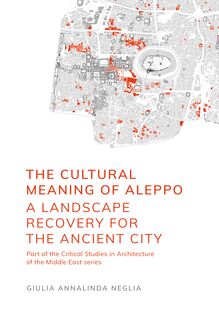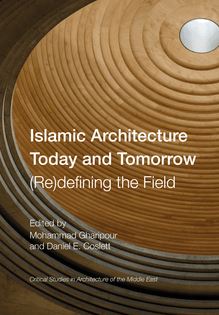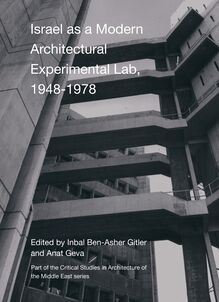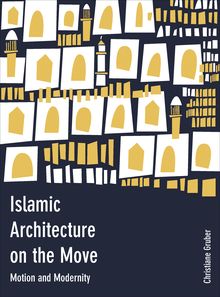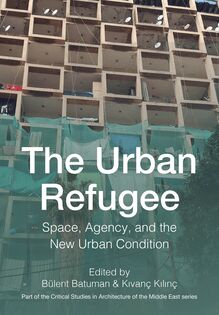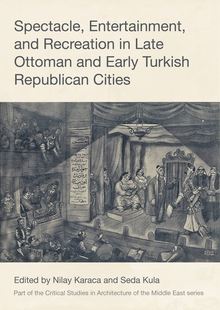-
 Univers
Univers
-
 Ebooks
Ebooks
-
 Livres audio
Livres audio
-
 Presse
Presse
-
 Podcasts
Podcasts
-
 BD
BD
-
 Documents
Documents
-
- Cours
- Révisions
- Ressources pédagogiques
- Sciences de l’éducation
- Manuels scolaires
- Langues
- Travaux de classe
- Annales de BEP
- Etudes supérieures
- Maternelle et primaire
- Fiches de lecture
- Orientation scolaire
- Méthodologie
- Corrigés de devoir
- Annales d’examens et concours
- Annales du bac
- Annales du brevet
- Rapports de stage
La lecture à portée de main
Vous pourrez modifier la taille du texte de cet ouvrage
Découvre YouScribe en t'inscrivant gratuitement
Je m'inscrisDécouvre YouScribe en t'inscrivant gratuitement
Je m'inscrisEn savoir plus
Vous pourrez modifier la taille du texte de cet ouvrage
En savoir plus

Description
The book documents the history and morphology of the Ancient City of Aleppo, outlining first the urbanistic development of the city and then focusing on the architectural heritage with specific focus on the domestic architecture, addressing the initiatives to reconstruct and rehabilitate the urban fabric. The author argues in favour of the safeguarding and rehabilitation of the architectural heritage to protect the cultural memory of the inhabitants of Aleppo, despite of the destruction of architecture due to the recent war.
Through a capillary documentation of the palimpsest of Aleppo – the peculiar characteristics of its courtyard houses and the neighbourhoods of Bayyada, Bab Quinnesrin and al-Farafra – this is a theoretical and practical handbook for architects, urban planners and restorers alike. Through this analytical discussion of the city’s urban fabric, it introduces the concept of the cultural urban landscape acting as a 'cohesive territorial organism', nourished by different cultures, in which contrasting scales of land, city and neighbourhood are interconnected in a fractal state. With a focus on retaining the uniqueness and diversity of this residential typology, which bore witness to the rich cultural history of Syria and the Middle East as a whole, Neglia maps a future reconstruction that focuses on cultural continuity, tradition and the re-establishment of a crucial social memory.
Of particular interest and relevance to cultural heritage experts, urban planners architects and designers. Also, to researchers, scholars and students interested in studies on urban morphology and building typology, UNESCO and ICOMOS. Scholars and students interested in the Middle East.
Will also be of significant interest to professionals dealing with the implementation of rehabilitation measures in other cities inscribed on the Word Cultural Heritage List, or cities with a sound historic fabric which has been destroyed due to war or other events.
Forewords by Nada al Hassan, Attilio Petruccioli and Sakhar Olabi
Acknowledgements
Introduction: Why Aleppo is Important: Framework and War Scenario
Chapter I: The Cultural Significance of Aleppo’s Forma Urbis: An Overview of Layers and Ideas of Urban Conformation
Natura Naturalis and Natura Artificialis: The Plateau and the Tells
Hellenistic Planning
Roman Planning
The Medieval Byzantine City
The Medieval Islamic City
The Specialized Mamluk and Ottoman City
The Gutted and Transformed Modern City
Chapter II: The Cultural Significance of Aleppo’s Courtyard House: A Mirror of Middle Eastern Cultural History
The Courtyard House Layout
The Basic Elements of the House: Multi-purpose and Special Rooms
The Inner Garden
Typological Features
Chapter III: The Cultural Significance of the Reconstruction: Urban Recovery against Amnesia
Framework for Reconstruction and Recovery
Terms for Urban Recovery
Reconstruction: Consciousness or Amnesia?
Memory, Culture and Identity: Challenges for a Culture-Oriented Recovery
Recommendations and Strategies for a Culture-Oriented Urban Recovery
Conclusion
References
List of Figures
Notes
Sujets
Informations
| Publié par | Intellect Books |
| Date de parution | 22 décembre 2020 |
| Nombre de lectures | 2 |
| EAN13 | 9781789381795 |
| Langue | English |
| Poids de l'ouvrage | 11 Mo |
Informations légales : prix de location à la page 0,2000€. Cette information est donnée uniquement à titre indicatif conformément à la législation en vigueur.
Extrait
The Cultural Meaning of Aleppo is the fifth book in the Critical Studies in Architecture of the Middle East series. The series is edited by Mohammad Gharipour (Morgan State University, Baltimore) and Christiane Gruber (University of Michigan, Ann Arbor). Critical Studies in Architecture of the Middle East is devoted to the most recent scholarship concerning historic and contemporary architecture, landscape and urban design of the Middle East and of regions shaped by diasporic communities more globally. We invite interdisciplinary studies from diverse perspectives that address the visual characteristics of the built environment, ranging from architectural case studies to urban analysis.
First published in the UK in 2020 by Intellect, The Mill, Parnall Road, Fishponds, Bristol, BS16 3JG, UK
First published in the USA in 2020 by Intellect, The University of Chicago Press, 1427 E. 60th Street, Chicago, IL 60637, USA
Copyright © 2020 Intellect Ltd
All rights reserved. No part of this publication may be reproduced, stored in a retrieval system, or transmitted, in any form or by any means, electronic, mechanical, photocopying, recording or otherwise, without written permission.
A catalogue record for this book is available from the British Library.
Copy editor: MPS Technologies
Cover designer: Aleksandra Szumlas
Cover image: Mending the urban morphology of the Ancient City of Aleppo.
© Studio Landscape Architecture.5 2018-19. Polytechnic University of Bari.
Production editor: Faith Newcombe
Series: Critical Studies in Architecture of the Middle East
Series editors: Mohammad Gharipour and Christiane Gruber
Typesetting: Contentra Technologies
Print ISBN: 978-1-78938-177-1
ePDF ISBN: 978-1-78938-178-8
ePub ISBN: 978-1-78938-179-5
Series ISSN: 2059-3562
Printed and bound by Gomer, UK
This is a peer-reviewed publication.
They prefer to live in their ruins instead of being relocated, not to lose their memories
John B. Jackson 1
Contents
Forewords
Nada al Hassan , Attilio Petruccioli and Sakhar Olabi
Acknowledgements
Introduction: Why Aleppo is Important: Framework and War Scenario
Chapter I: The Cultural Significance of Aleppo’s Forma Urbis: An Overview of Layers and Ideas of Urban Conformation
Natura Naturalis and Natura Artificialis: The Plateau and the Tells
Hellenistic Planning
Roman Planning
The Medieval Byzantine City
The Medieval Islamic City
The Specialized Mamluk and Ottoman City
The Gutted and Transformed Modern City
Chapter II: The Cultural Significance of Aleppo’s Courtyard House: A Mirror of Middle Eastern Cultural History
The Courtyard House Layout
The Basic Elements of the House: Multi-purpose and Special Rooms
The Inner Garden
Typological Features
Chapter III: The Cultural Significance of the Reconstruction: Urban Recovery against Amnesia
Framework for Reconstruction and Recovery
Terms for Urban Recovery
Reconstruction: Consciousness or Amnesia?
Memory, Culture and Identity: Challenges for a Culture-Oriented Recovery
Recommendations and Strategies for a Culture-Oriented Urban Recovery
Conclusion
References
List of Figures
Notes
Index
Forewords
Nada al Hassan 2
Head of the Sub-Regional Maghreb office, UN-Habitat
Aleppo, an historic city of great wealth, inscribed on UNESCO’s World Heritage List since 1986, embodied through its urban structure, its architectural features and its very genius loci , a long and complex evolution and outstanding universal value.
From 2012 to 2016, Aleppo went through its worst conflagration ever. The dramatic conflict and its dire humanitarian consequences hit Aleppo, the economic heart of Syria, at the peak of its urban regeneration success. Indeed, before the Syrian conflict began, Aleppo was going through a deep transformation thanks to several initiatives that addressed not only the conservation of its physical attributes, but also, and more importantly, the revitalization of its social and economic life, with attention to its inhabitants, their housing conditions and their livelihoods, and with steady progress being made towards local sustainable development.
Today, Aleppo needs to heal its scars and to rise from the ashes.
As history has shown us, the recovery and reconstruction of a city devastated by war is a huge undertaking. Cities that were heavily damaged during World War II are still being re-built today. Their reconstruction has become a seperate phase in their histories.
Since the end of hostilities in Aleppo, work has begun on responding to humanitarian urgencies and implementing safety measures. Inhabitants have started to return to their homes and undertake repairs. Before the conflict ended, technical entities, universities, international organisations such as UNESCO, local associations and individuals started working on documentation, damage assessment, urgent consolidation works, strategic planning and theoretical approaches to recovery and reconstruction.
Recovery and reconstruction approaches and strategies can only stem from in-depth knowledge of the city. Through an academic life that was, and still is, largely dedicated to studying Aleppo, and with the engaged contribution of a large number of scholars professionals and students, Giulia Annalinda Neglia is contributing through this book to the knowledge of one of the most important features of the city: its urban fabric and its housing typologies.
While archives that provide extensive information on Aleppo’s monuments are in general available, archives on housing and vernacular architecture – beyond important palaces or houses of dignitaries – are rare. This book provides in-depth knowledge and analysis of housing features in Aleppo, and their significance from urban, architectural, environmental, social and economic viewpoints, that will prove to be crucial for planning the future of the city.
To rebuild Aleppo, there needs to be an overall vision of its future. A vision that embodies shared values and aspirations and fosters reconciliation and equitable recovery policies. This huge undertaking is multilayered by definition; it requires a wide array of disciplines and guiding principles. The road to rebuilding Aleppo is not a straightforward one. However, its history and its values, including its World Heritage values, should certainly weigh in the decision-making process, not only to honour Syria’s engagement under the World Heritage Convention, but also to capitalize on Aleppo’s role in collective memory and in reinforcing social cohesion.
Moreover, Aleppo’s cultural wealth, represented by its traditional and contemporary cultural expressions, in particular music, crafts and cultural practices, and supported by the creativity of its artists, architects, planners, historians, archaeologists and intellectuals at large, could, if integrated in a structured and participatory manner within recovery and planning policies and operations, drive change and substantially contribute to shaping a forward-looking future for the city, one that aims to achieve social, economic and environmental sustainability.
The road to recovery is long but the opportunities to shape a better future are possible. The inhabitants of Aleppo should be given the opportunity to design their future through informed decision-making processes, national and international debates and the involvement of all.
Attilio Petruccioli
Professor at the Doctoral School DrACO, University of Rome La Sapienza, Italy
There are many ways to look at and interpret cultural landscapes and urban spaces. We can describe and study them by focusing on aesthetic or visual considerations, investigating urban infrastructure and networks, examining the sites’ morphology or the characteristics of the buildings, or taking into account sociological and psycho-perceptual analysis.
We can also study and describe historic urban landscapes as layers of history: as stratification of formative stages, as cultural systems defined by diverse and heterogeneous influences, or as the heritage of human signs and past traces that deeply influenced the urban layout and transformed it into a rich palimpsest.
This book takes the latter approach for describing the historic urban landscape of the Ancient City of Aleppo. A World Heritage Site that has witnessed the advent of civilisation since the beginnings of organized human society until now, Aleppo – after the damage to its built environment, and therefore to its culture, sustained during the Syrian civil war – needs to be renovated in continuity with its past.
Through a focus on a history of Aleppo’s urban fabric, and on the peculiar characteristics of its neighbourhoods, courtyard houses and open spaces, this book aims at providing not just a record of urban and architectural history, but also a capillary documentation of the cultural meanings embedded in the city’s urban landscape. Not least, it will hopefully serve as a useful theoretical handbook for architects and urban planners interested in sustainable and consistent recovery and urban regeneration, introducing the concept of cultural landscape as a cohesive urban organism nourished by different cultures.
Since the ‘eclipse of memory’ hangs over Aleppo’s future, it is important to envision the city’s reconstruction in continuity with its traditional layout, and to retain as much as possible the inherited cultural characteristics and the unique architectural and social diversity of Aleppo. Such an approach to reconstruction must take into account cultural continuity, tradition, and the reestablishment of collective or social memory.
Therefore, this book focuses on the need to recover the morphological characteristics and cultural structure of the fine-grained urban fabric of courtyard houses and its related open spaces (courtyard gardens and cul-de-sacs).
It is useful to add a touch of utopian optimism to the message of hope with which a book on the reconstruction of Aleppo
-
 Univers
Univers
-
 Ebooks
Ebooks
-
 Livres audio
Livres audio
-
 Presse
Presse
-
 Podcasts
Podcasts
-
 BD
BD
-
 Documents
Documents
-
Jeunesse
-
Littérature
-
Ressources professionnelles
-
Santé et bien-être
-
Savoirs
-
Education
-
Loisirs et hobbies
-
Art, musique et cinéma
-
Actualité et débat de société
-
Jeunesse
-
Littérature
-
Ressources professionnelles
-
Santé et bien-être
-
Savoirs
-
Education
-
Loisirs et hobbies
-
Art, musique et cinéma
-
Actualité et débat de société
-
Actualités
-
Lifestyle
-
Presse jeunesse
-
Presse professionnelle
-
Pratique
-
Presse sportive
-
Presse internationale
-
Culture & Médias
-
Action et Aventures
-
Science-fiction et Fantasy
-
Société
-
Jeunesse
-
Littérature
-
Ressources professionnelles
-
Santé et bien-être
-
Savoirs
-
Education
-
Loisirs et hobbies
-
Art, musique et cinéma
-
Actualité et débat de société
- Cours
- Révisions
- Ressources pédagogiques
- Sciences de l’éducation
- Manuels scolaires
- Langues
- Travaux de classe
- Annales de BEP
- Etudes supérieures
- Maternelle et primaire
- Fiches de lecture
- Orientation scolaire
- Méthodologie
- Corrigés de devoir
- Annales d’examens et concours
- Annales du bac
- Annales du brevet
- Rapports de stage
